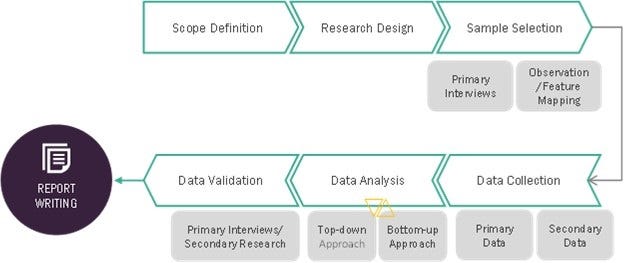The Building Blocks of Wireless Communication: RF Signal Chain Components
RF signal Chain Components Market size is valued at USD 38.9 billion in 2022 and is anticipated to be USD 80.0 billion by 2028
The invisible hand behind our wireless world, the RF (Radio Frequency) signal chain, is an intricate system that transmits and receives information. This chain relies on a variety of specialized components working together to ensure clear and efficient communication.

Let’s delve into some key players in this fascinating world:
- Filters: Imagine a busy highway with different lanes for various vehicles. RF filters act similarly, directing specific frequency bands (lanes) of the signal while blocking unwanted noise. They ensure only the desired information reaches its destination.
- RF Amplifiers: Weak signals need a boost to travel long distances. Amplifiers, as the name suggests, amplify the power of the signal, allowing it to overcome attenuation (weakening) caused by distance or obstacles. Different types of amplifiers cater to specific needs, like Low Noise Amplifiers (LNAs) for amplifying faint signals with minimal noise, or Power Amplifiers (PAs) for generating high-power signals for transmission.
- Mixers: These components act like musical mixers, combining or separating different frequencies. In an RF signal chain, a mixer can shift the frequency of a signal to a desired range for processing or transmission. This frequency conversion is crucial for various applications.
- Switches: Imagine a network of roads with controlled access points. RF switches act similarly, allowing the selection of specific signal paths at different times. This enables functions like switching between antennas or directing signals to different parts of a receiver.
- Phase Shifters: Precise timing is vital in communication. Phase shifters introduce a controlled delay to a signal, allowing for adjustments in its timing. This can be used for antenna beamforming, where multiple antennas are coordinated to create a stronger signal in a specific direction.
Get more information https://www.marketsandmarkets.com/pdfdownloadNew.asp?id=234495624
Beyond the Basics:
The RF signal chain isn’t limited to these core components. Additional players include:
- Attenuators: These components reduce the signal strength, acting like volume controls for radio waves. They can be used to adjust signal levels for optimal processing or prevent overloading circuits.
- Detectors: These components convert RF signals into usable baseband signals, a form understandable by digital circuits. This allows for demodulation, extracting the information carried by the radio wave.
- Synthesizers: These generate precise, stable frequencies that act as the foundation for transmitting and receiving signals. They ensure all components in the chain are operating on the same “wavelength.”
The Synergy of Components:
Each component plays a vital role, and their combined performance determines the overall effectiveness of the RF signal chain. Factors like noise figure (amplifier noise), gain (amplifier strength), and insertion loss (filter signal reduction) are carefully considered when selecting components for a specific application.
Applications Abound:
RF signal chain components are the workhorses behind various wireless technologies like cellular networks, Wi-Fi, Bluetooth, GPS, and radio broadcasting. Their presence is felt in everything from smartphones and laptops to radar systems and satellite communications.
The future of wireless communication continues to evolve, demanding advancements in RF components. With continuous research and development, these tiny players promise to ensure even more seamless and efficient wireless experiences in the years to come.














